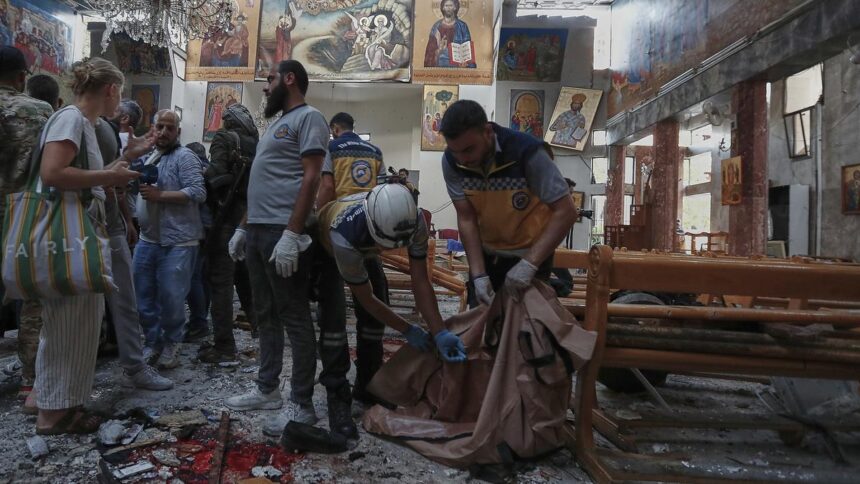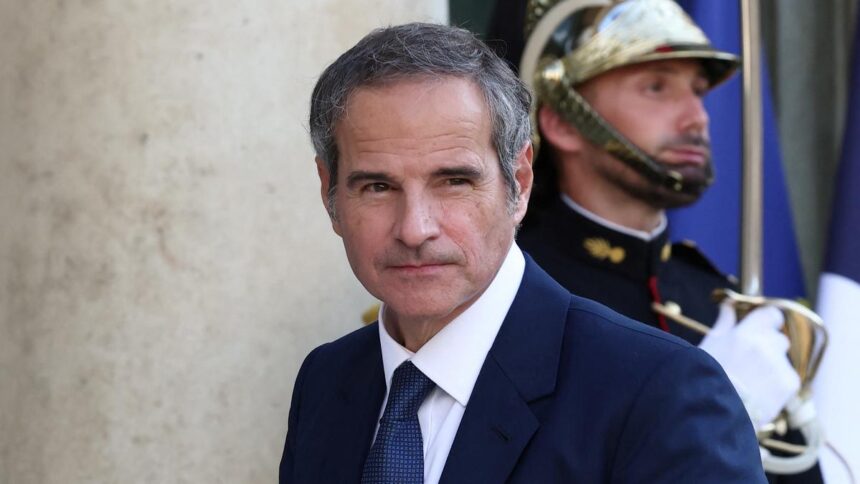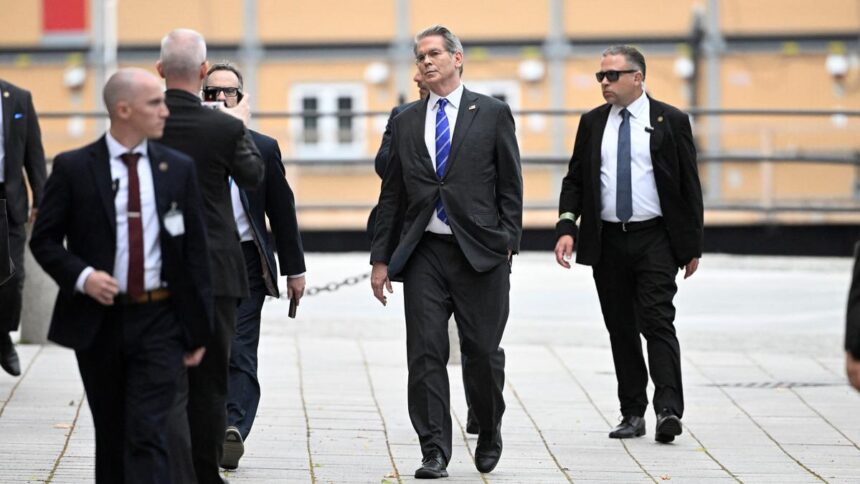The King David Hotel of Jerusalem is one of the landmarks of the contested city. Built with locally sourced pink limestone and opened in 1931 by Ezra Mosseri, a wealthy Egyptian Jewish banker, the hotel, overlooking the Old City that is holy for all three Abrahamic faiths, stands as a symbol of both Israel’s Jewish roots and its bloody history.
From its earliest days under the British Mandate of Palestine, the hotel hosted royalty and prominent dignitaries. During the Mandate, the British turned the hotel’s southern wing into their administrative and military offices. On July 22, 1946, members of Irgun, a right-wing Zionist militia, entered the hotel disguised as Arab workers and waiters. Their mission: plant explosives in the basement of the main building. The powerful explosion brought down the western half of the southern wing, killing at least 91 people. The bombing, the deadliest attack carried out by Zionists against the British, was one of the earliest terrorist attacks in modern West Asia.
The British found it increasingly difficult to continue their rule of Palestine after the Second World War. Seeking a way out, London turned to the UN, saying it wanted to vacate the Mandate. In 1947, the UN General Assembly decided to set up a Special Committee on Palestine (UNSCOP), which proposed to divide Palestine into ‘an independent Arab State, an independent Jewish State, and the City of Jerusalem’. The Jewish Agency accepted the plan, while Arab nations opposed the partition. On May 14, 1948, on the eve of the expiry of the British Mandate, the Jewish People’s Council gathered at the Tel Aviv Museum (today known as Independence Hall). David Ben-Gurion, leader of the Jewish Agency, declared the establishment of the state of Israel from the podium.
Independence, Nakba
The next day, the armies of four countries — Egypt, Syria, Transjordan, and Iraq — entered Palestine and clashed with the Jewish army, triggering the first Arab-Israeli war. The war continued for a year, and when a ceasefire was signed, Israel was controlling more territories of historic Palestine than even the UN plan offered for the Jewish state.
For Israel, it was the ‘war of independence’, but for Palestinians, it was Nakba (catastrophe). Roughly 7,50,000 Palestinians were violently displaced from their homes and lands by Zionist militias. Thousands of Palestinians were killed. Hundreds of Arab villages and towns were depopulated and destroyed. West Asia suddenly looked like a different region. In 1967, during the Six-Day War, Israel captured the entire Sinai Peninsula and Gaza Strip from Egypt; the West Bank and eastern Jerusalem from Jordan; and the Golan Heights from Syria. The UN Partition plan promised 55% of historical Palestine to the Jewish state; Israel controlled some 75% after the 1948 war, and after the 1967 war, the whole of Palestine came under Israel’s control.
What is the Green Line?
Palestinians today demand an independent state based on the 1967 border (Green Line) — which means the whole of the West Bank, Gaza Strip, and East Jerusalem. Different Palestinian factions, including Fatah, which runs the Palestine Authority based in the West Bank, and Hamas, which is the main force in the Gaza Strip, have either directly or indirectly accepted the 1967 border. Israel, in the past, had committed itself to the two-state solution, but it has never made its position clear on the border. In recent years, Israel’s position has further shifted to the right, with its rulers, including Prime Minister Benjamin Netanyahu, publicly disowning the two-state plan.
After the 1967 war, Israel for years refused to accept Palestinian nationalism. The first Israeli recognition of Palestinian nationalism came in the 1978 Camp David agreement. Under the agreement, signed five years after the 1973 Yom Kippur War, Israel agreed to withdraw completely from the Egyptian Sinai Peninsula. Menachem Begin, the Israeli Prime Minister, also agreed, under the Framework for Peace in the Middle East agreement, to abolish Israel’s military rule over the West Bank and Gaza, and establish a Palestinian self-governing authority with elections and local policing. The Framework Agreement was not immediately implemented. But it set the agenda for the Israeli-Palestinian peace process.
The outbreak of the first intifada brought Israel under greater pressure and pushed the momentum in favour of the Palestinians. On November 15, 1988, Yasser Arafat read out a declaration in Algiers, Algeria, proclaiming the birth of ‘a state of Palestine in our Palestinian territory with its capital Jerusalem’. Weeks later, at least 100 UN member states, including India, acknowledged the declaration of the state of Palestine.
Israel faced two major challenges at this juncture. One was the growing difficulties in governing the Palestinian territories amid continuing protests. The other was the global recognition the Palestinian leadership was drawing. The Palestine Liberation Organization’s policy was also undergoing changes. If earlier it called for ‘the liberation’ of the whole of historical Palestine, it was now sending signals of compromise for a deal with Israel. The peace bid gained momentum after Yitzhak Rabin, of Labour, became Prime Minister in 1992. Rabin joined secret talks in Oslo based on the Framework Agreement. On September 9, 1993, both parties exchanged Letters of Mutual Recognition, signed by Prime Minister Rabin and Chairman Arafat. Four days later, on September 13, 1993, Rabin and Arafat shook hands in Washington in the presence of U.S. President Bill Clinton and signed the Oslo Accord I. Rabin was forthright in his message to the Palestinians. “Let me say to you, the Palestinians: we are destined to live together, on the same soil in the same land,” he said.
According to the Oslo II Agreement, reached between the Palestinian leadership and Israel in 1995, the West Bank was divided into three areas — A, B, and C. Hebron, Nablus, Ramallah, Bethlehem and some towns and villages that do not border Israeli settlements are in Area A, which comprises some 18% of the West Bank. Area B, which comprises around 22% of the territory, is under Palestinian civil administration, while Israel retains exclusive security control. Area C is the largest division in the West Bank, comprising some 60% of the territory; it is under full Israeli civil administration and security control. The Oslo Accords were initial agreements aimed at taking some preliminary steps towards resolving the Palestine question in five years. But the resolution never came.
The permanence of conflict
In the history of Israel and Palestine, there is always a U-turn after a serious push for peace. On November 4, 1995, Prime Minister Rabin was assassinated by a Jewish extremist. His immediate successor, Shimon Peres, called for an election hoping that he could mobilise the peace dividend and take the Oslo process further. But in the 1996 election, Likud returned to power and Mr. Netanyahu became Prime Minister for the first time.
Mr. Netanyahu initially refused to honour the commitments of the past governments. The rise of Hamas, which never accepted the Oslo process, and suicide attacks by Palestinian militants, further complicated the peace process. When the interim five-year period since the Oslo agreements was over in May 1999, a comprehensive agreement between Israel and Palestine was still elusive. The Palestinian authority was running parts of the West Bank and Gaza. Israel, instead of directly ruling over West Bank and Gaza, started controlling territories indirectly, and continued to build Jewish settlements on Palestinian lands. The status of Jerusalem and the right of return of Palestinian refugees remained the crux of the problem with no meaningful efforts from either side to settle the issues.
President Clinton tried to revive the stalled peace process in 2000 in a Camp David summit in which he hosted both Israeli Prime Minister Ehud Barack and Arafat. All key components of the Israeli-Palestinian conflict came up for discussions during the summit. But the summit collapsed as the two sides failed to agree on the status of Jerusalem and the right of return. There were several attempts to revive peace talks since the failure of the second Camp David negotiations, but none of them has taken off.
October 7, 2023 and after
Israel’s record shows that it made limited concessions only in the face of external pressure or Palestinian violence. During the Suez war, Israel was forced to pull out of Sinai amid threats and pressure tactics from both American President Dwight Eisenhower and Soviet leader Nikita Khrushchev in 1956. In the late 1970s, constant pressure from the Carter administration, and also the growing threat perception from Egypt following the Yom Kippur War prompted Israel to come to Camp David and finally sign both the Sinai pull-out and Framework Agreements. In 1993, the Oslo process was triggered by the First Intifada. Ariel Sharon’s Gaza disengagement happened against the backdrop of the Second Intifada.
During the years that followed the Second Intifada, Israel thought the status quo was manageable. The Palestinians were a divided lot. The West Bank was run by Fatah and Gaza by Hamas. Palestinian Authority President Mahmoud Abbas lacked the charisma and command of Arafat. The Palestinian authority was flush with corruption. There was no organised resistance in the West Bank. There was no international pressure to make peace. And Arabs were ready to sidestep the Palestine question to make bilateral peace with Israel. The Israelis thought they could continue the occupation without consequences.
Then came the October 7 attack.
Did the Palestinians achieve anything from the October 7 attack? Initial signs suggest that Hamas’s attack and Israel’s subsequent war on Gaza have further set back the push for a two-state solution. But at the same time, the war in Gaza brought the Palestine question back to the centre of West Asia’s geopolitics. Israel wanted to localise the Palestine question, and Hamas has re-regionalised it. When Israel launched the war on Gaza, it said it would dismantle Hamas. But after 22 months of fighting, Hamas is far from destroyed. Israel, on the other side, faces serious allegations of genocide and mass starvation, which have prompted more countries in the West, all of them Israel’s allies, to offer recognition to Palestinian sovereignty.
If anything, October 7 and its aftermath are a reminder that occupation is not a solution. Israel wants to continue the occupation without consequences. But Palestinian militants seem determined to keep fighting, with whatever available tactics they have, including the means of terror.
Unless the Palestine question is addressed, neither Israel nor West Asia is going to enjoy durable peace and stability. And a lasting and just solution to the Palestine question is either the creation of a state of Palestine, with all the rights other nation states enjoy, or the acceptance of the Palestinian people as equal citizens in a single state that’s purged of its apartheid ideology and architecture. Such a settlement looks remote today. But the alternative is the unsustainable and untenable path of violence.






















